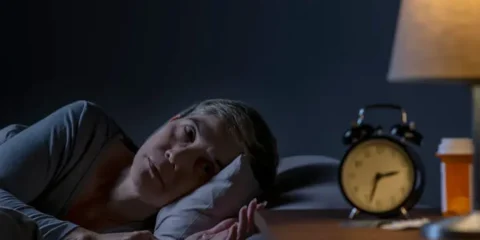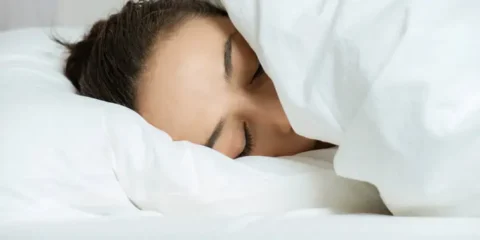Causes, Symptoms, and Innovative Treatment Options for Sleep-Wake Disruptions
Circadian rhythm sleep disorders (CRSDs) refer to a group of sleep disturbances associated with misalignments between a person’s internal biological clock and the external 24-hour day-night cycle.
Our internal body clocks or circadian rhythms regulate various physiological processes and behaviors, including the timing of sleep. Disruptions to these circadian rhythms can severely impact the quantity and quality of sleep and result in excessive daytime sleepiness.
CRSDs demonstrate the vital role our internal clocks play in maintaining optimal sleep-wake cycles. Understanding circadian disruptions provides insights into innovative diagnosis and treatment approaches for restoring healthy sleep patterns.
This article explores the science behind circadian rhythms, types of CRSDs, symptoms, and emerging interventions that realign sleep-wake rhythms with our intricate internal timekeeping system.
The Role of Circadian Rhythms in Sleep
Our bodily functions and behaviors operate on a daily, or circadian rhythm, linked to the Earth’s 24-hour light-dark cycle. The term “circadian” comes from the Latin words “circa,” meaning “around,” and “diem,” meaning “day.” Circadian rhythms follow this approximate 24-hour period and represent intrinsic biological clocks that regulate wakefulness, sleepiness, hormone levels, appetite, and additional processes.
These innate rhythms evolved to synchronize internal physiology with alternating day and night. Core body temperature, blood pressure, neural activity, and innumerable biological markers oscillate with a 24-hour periodicity.
The hormone melatonin, which promotes sleep, has a distinct circadian pattern with levels rising at night. Circadian rhythms provide internal temporal order and enable anticipation of, and adaptation to, regular environmental changes.
At the cellular level, interlocked transcription-translation feedback loops comprise molecular circadian clocks. Complex mechanisms generate intrinsic near 24-hour rhythms in each cell. At the organismal level, central clock components in the brain’s hypothalamus synchronize circadian oscillations across tissues and behavior. This brain “master clock” responds to external time cues like daylight to coordinate internal circadian timing.
The Human Body’s Internal Timekeepers
The central circadian pacemaker located in the brain’s suprachiasmatic nucleus (SCN) region functions as the master coordinator of our myriad tissue-specific cellular clocks. The SCN clock synchronizes with environmental light-dark cycles received through the retinohypothalamic tract.
Specialized photosensitive retinal ganglion cells detect light and send signals to the SCN, resetting circadian rhythms. This retinohypothalamic pathway conveys luminance information to synchronize the SCN master clock with the day-night cycle.
The pineal gland hormone melatonin also exhibits a strong circadian rhythm and facilitates communication between the SCN and the body’s peripheral clocks. In response to SCN timing signals, the pineal gland increases melatonin synthesis during the night.
Melatonin released into the bloodstream conveys darkness signals to regulate downstream circadian rhythms and sleep-wake states. This central master clock and peripheral clock network keeps all biological processes on a coordinated 24-hour schedule.
Types of Circadian Rhythm Sleep Disorders
When the timing of our internal circadian rhythms drifts out of alignment with the external 24-hour day-night cycle, we experience circadian rhythm sleep disorders. These include:

Common Symptoms and Impact on Quality of Life
Core symptoms of CRSDs include difficulties falling asleep at desired times, trouble staying asleep, excessive sleepiness when wakefulness is required, and not feeling fully alert during waking hours. Disrupted sleep commonly results in:
- Extreme daytime sleepiness, difficulty concentrating, impaired work/school performance
- Insomnia and inconsistent sleep durations, reduced sleep quality
- Increased risk for cardiovascular disease, high blood pressure, diabetes, obesity
- Higher risk of depression, mood disorders, cognitive issues, impaired memory
- Safety issues from drowsy driving, workplace accidents, injuries
- Decreased motivation, energy, exercise, social engagement
Restoring circadian alignment is crucial for maintaining health, wellbeing, productivity, and quality of life.
Tools for Diagnosis
Diagnosing CRSDs involves assessing sleep-wake timing through:
- Sleep logs documenting bedtime, sleep onset, wake time, daytime naps
- Wrist actigraphy measuring sleep-wake patterns
- Polysomnography monitoring sleep architecture
- Melatonin profiling of circadian rhythms
- Questionnaires on sleep habits, chronotype, daytime functioning
The American Academy of Sleep Medicine provides clinical guidelines for diagnosing and managing CRSDs. Identifying circadian misalignment is the first step toward realignment.
Treatment Options and their Efficacy
Treatment approaches focus on resetting the master body clock using external cues like light and melatonin. Common interventions include:
1. Light Therapy
- Exposure to bright light in the mornings can advance sleep timing for delayed sleep phase disorder.
- Bright light exposure in the evenings can delay sleep timing for advanced sleep phase disorder.
- Blue wavelength light is especially potent for circadian regulation.
- Timing, intensity, duration of light is tailored to shift circadian rhythms.
2. Melatonin Supplements and Melatonin Receptor Agonists
- Taking melatonin can advance or delay sleep onset and wake times.
- Melatonin receptor agonists like Ramelteon also modulate circadian timing.
- Improving melatonin signaling pathways can stabilize sleep cycles.
3. Behavioral Therapy
- Changing sleep and wake times gradually using chronotherapy.
- Maintaining regular sleep-wake schedules.
- Avoiding behaviors that mismatch circadian phase.
4. Specialized Medications
- Hormones like cortisol and thyroid medications may be used.
- Off-label use of modafinil and sodium oxybate.
- Antidepressants and anti-anxiety drugs for comorbid conditions.
Combined strategies like light therapy, melatonin, sleep scheduling, and medication produce optimal outcomes.
A Revolutionary Sleep Solution—NightLase® by Allure Medical
After exploring various treatment options for Circadian Rhythm Sleep Disorders, it’s worth considering a revolutionary, non-invasive approach to improve sleep quality—NightLase.
Offered by Allure Medical, this cutting-edge therapy serves as a panacea for sleep issues like sleep apnea and snoring.
How Does NightLase Work?
NightLase employs laser energy to safely heat tissues in the airway, causing a tightening effect that keeps the airway open. The treatment is so gentle that it’s apt for the sensitive tissue inside the mouth, yet effective enough to bring about clinically significant improvements in sleep patterns.
The Ease and Effectiveness of NightLase
What sets NightLase apart is its accessibility and success rate. Any qualified doctor or dentist can administer the treatment, which consists of three to five 15-minute sessions spread over two to three months. With no need for anesthesia, patients can immediately return to their daily activities.
A Patient-Centric Approach
NightLase is not just effective; it’s also highly comfortable for patients. A full course lasts just six weeks and includes three separate sessions. The results have been shown to last up to a year, offering a long-term solution without the need for any device to be worn during sleep or chemical treatment.
Superior Treatment Performance
NightLase uses high-performance laser technology that can be precisely tuned to attain the desired clinical outcomes. This ensures targeted, effective treatment without unnecessary energy deposition into the skin.
Are You Ready for a Good Night’s Sleep?
If you’re tired of traditional treatment options and are looking for an effective, non-invasive solution to improve your sleep, NightLase by Allure Medical could be the answer you’ve been searching for.
Special Considerations for Specific Populations
Unique factors affect certain populations, requiring tailored management approaches:
- Non-24-hour sleep-wake disorder frequently affects blind individuals unable to receive light cues. Melatonin, timed melatonin blockade, behavioral training are often used.
- Many elderly experience advanced sleep phase patterns. Gradually delaying bedtime and light therapy in evenings can help overcome this age-related circadian shift.
- Night shift workers and those with changing schedules have circadian misalignment from abnormal work-rest cycles. Proper sleep hygiene and well-timed light exposure help minimize disruptions.
- Developmental disabilities often involve abnormal circadian rhythms. Carefully designed behavioral plans combining light, melatonin and scheduled daily activities promote realignment.
The Wider Implications of CRSDs
CRSDs significantly impact health, performance, safety, and wellbeing. Circadian misalignment is associated with:
- Impairments in cognitive functioning, mood, concentration, motivation
- Increased risk of obesity, metabolic disorders, cardiovascular disease, cancer
- Workplace and driving accidents from sleep deprivation
- Social isolation and family relationship issues
Resetting circadian rhythms enhances daily performance, motivation and overall functioning for affected individuals. Aligning internal biological timekeeping with social responsibilities also benefits families, workplaces, and communities.
Takeaway
Circadian rhythm sleep disorders highlight the importance of our internal 24-hour biological clocks for maintaining optimal sleep-wake cycles. Advancing scientific understanding of these circadian disruptions has led to innovative treatments that reset the body’s master clock, realigning disordered sleep patterns.
While CRSDs currently affect a small percentage of the population, the prevalence of circadian misalignment is likely underestimated. Raising awareness and improving access to diagnosis and care will alleviate the debilitating symptoms plaguing individuals suffering from these elusive sleep disorders.
Take Control of Your Internal Clock for Better Sleep
If you struggle with sleep troubles related to your internal body clock, don’t despair. At Allure Medical, we understand the complexities of circadian rhythms and can help you finally get the restful sleep your body craves. Our experienced team utilizes cutting-edge diagnostics to get to the root of your sleep issues.
We then craft a personalized treatment plan that syncs your sleep-wake cycle with your natural circadian rhythms. Reach out today by scheduling an appointment online to learn more about our innovative sleep health services. You deserve deep, rejuvenating sleep at the right times so you can live your best life. Let our circadian rhythm experts guide you.










